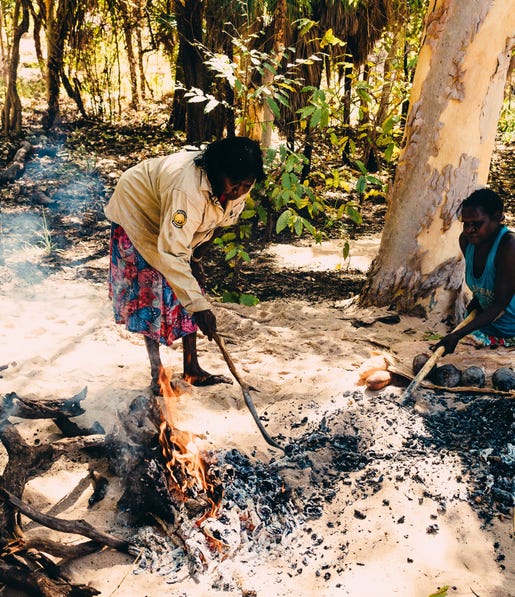Pitch your tent in a world heritage-listed national park and step into a land of cascading waterfalls, sandstone gorges and ancient rock art.
Kakadu & Surrounds has dozens of campgrounds spread across its seven distinct regions. You could lay your head in a different spot every night for months and never see the same view twice.
Kakadu National Park is world heritage listed for a reason: it’s spectacular. The almost 20,000 square kilometres of changing landscapes is as diverse as it is unique with waterfalls, billabongs, rock art, cultural experiences and wildlife unrivalled across the world.
Get back to nature with a swag under the stars and keep an eye out for the famous saltwater crocodiles on patrol along with barramundi, a range of stunning native birds, flatback turtles, wallabies, quolls and bandicoots, flying foxes and the huge termite mounds.
Kakadu truly has everything you could want in an escape, just a few hours from the city.
The best time to camp in Kakadu
Kakadu is in the Top End which has two distinct tropical seasons – the Wet/Tropical summer and the Dry. The best time to visit will be largely determined by the type of activities you’d like to do and areas you’d like to explore. Some roads may be closed during the Tropical Summer, restricting access to the places you can travel.
Regardless of the time of year you visit, sun protection and carrying enough drinking water is a must. Bug spray won’t hurt to keep the mosquitoes and midgies at bay.
Dry season (May to October)
The dry season is considered by some visitors as the best time to visit Kakadu as it offers optimal wilderness camping weather, especially during the drier months of June, July and August.
In the Dry, the days are sunny with the average temperature ranging from 21°C to 36°C. There’s little chance of rain, and humidity is low so you can comfortably explore the escarpments, rock art sites, cultural tours, nature and wildlife before settling into a cooler night in your outdoor tent or swag.
Wet season/Tropical Summer (November to April)
Things quieten down during the Top End’s Tropical Summer, but if you love warmer weather and don’t mind rainfall, some visitors and locals think this is the most beautiful time to visit the park. The waterholes and waterfalls are full and flowing, wildlife is active and the crowds are smaller. If you’re sensitive to the heat, we suggest staying somewhere with a resort pool and cabins.
Expect temperatures during this period to range from 24°C to 37°C, with 80% humidity. This time of year also brings some impressive and beautiful thunderstorms, so we recommend checking all roads are open and accessible.
For more information on the weather in Kakadu and the Northern Territory check out our weather and seasons guide or for up-to-date weather forecasts visit the Bureau of Meteorology.
Kakadu National Park pass & permits
To visit Kakadu National Park you’ll need a park pass which you can organise online before your arrival. Some campsites are paid and require permits. The pricing varies depending on the time of year you visit. You can apply for a camping permit through the Department of Agriculture, Water and Environment.
Can I camp for free in Kakadu?
Within Kakadu National Park there are dozens of campgrounds starting from free basic campgrounds to luxury glamping cabins and suites.
If you’re looking for the quintessential camping experience, you’ll find a few bush campsites across Kakadu where you can pitch your tent for free. Check out Alligator Billabong, Four Mile Hole, Bucket Billabong and Red Lily Billabong and keep your eyes peeled for a shady spot to set up. These campgrounds are only accessible via 4WD though, so make sure you’re well equipped before you set off.
Camp where the fish are biting
The NT is well known for its fishing experiences and the billabongs and coastline of Kakadu are no exception.
If the idea of throwing a line in and cooking your fresh barra, jewfish, snapper or saratoga on an open firepit excites you, then these are some of the best places to camp and fish in Kakadu.
West Alligator Head (Waldak Irrmbal)
West Alligator Head is a secluded coastal beach camping area, and the only one in Kakadu. It’s very rarely visited by travellers, as it’s a bit out of the way down an 80km 4WD track, but there’s a reason you’ll find the local fishermen out there. It’s also a great place to spot flatback turtles who nest here for nine months of the year.
Mardukal campground
The Mardukal campground is a great option to base yourself to explore Kakadu. It is also right next to the Mardukal Billabong which is a known hot spot for chasing barra and saratoga. If the fish aren’t biting in the billabong then the Jim Jim and Mary River regions are only a drive away.
There are only unpowered campsites available, but the campground does have toilets, showers and a boat ramp at Mardukal Billabong.
Jabiru (town)
Jabiru is the perfect spot for any anglers who want a comfortable place to rest their head at the end of a successful day fishing, with East Alligator River and Yellow Water just a short drive away.
Being the main town in Kakadu, Jabiru has everything you need including a shopping centre, service station, medical clinic and even a golf course and swimming pool. Choose to stay at Kakadu Lodge or Anbinik Kakadu Resort.
Merl campground
Merl campground is right next to East Alligator River, which is a known spot for catching barramundi. When you’ve caught your fill, we recommend checking out the scenic walk through rock formations to Cahills Crossing or driving 3km to the Ubirr rock art site, which is one of the best places in the Top End to watch the sunset.

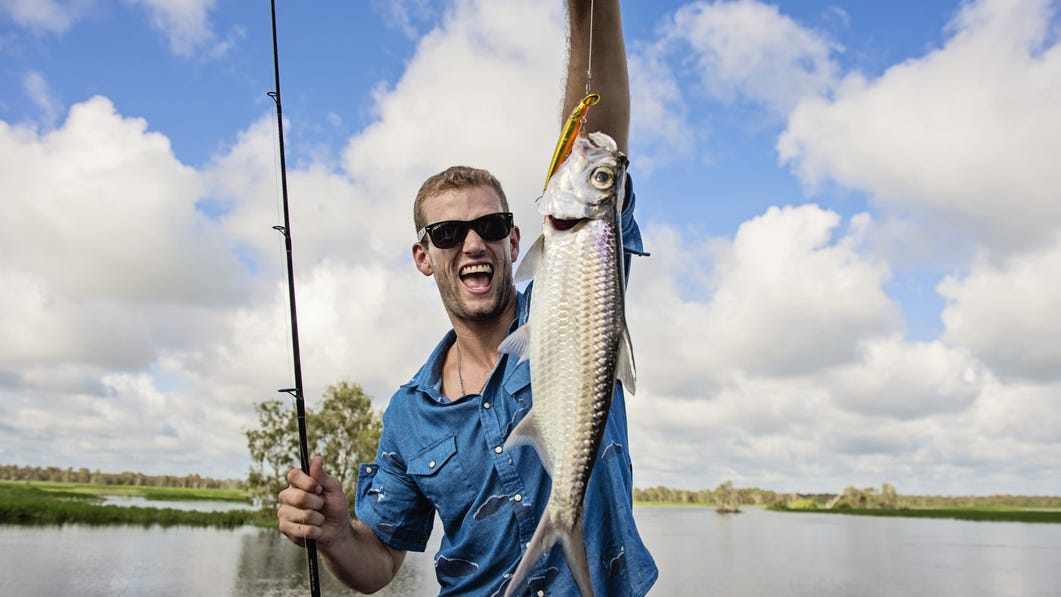
Roll out of bed and onto the water
If you’re planning a trip to Kakadu, then definitely pack your bathers and experience some of the most beautiful swimming holes in the world. After a short walk, you’ll want nothing more than to dive into these refreshing, natural pools.
Karnamarr campground
You’ll need a 4WD to get to Karnamarr campground. This shady campground is just around the corner from Jim Jim Falls (10km) and Twin Falls (18km), two of the most spectacular waterfalls in Kakadu.
There are only unpowered sites available, but the campground does have access to toilets, showers, drinking water, rubbish bins and fire pits.
Maguk campground
Maguk campground is the perfect place to set up camp if you want to make the most of Maguk’s amazing plunge pool. You can leave the car at the camp as it’s just a short but beautiful 2km walk to this impressive location.
You’ll need a 4WD to get to the campsite and there are toilets and firepits available.
Kambolgie campground
This simple, quiet little spot is a great central location to escape the crowds while also making the most of the Mary River region of Kakadu. Fifteen kilometres off the Kakadu Highway, this spot is close to Yurmikmik walks as well as Jarrangbarnmi (Koolpin gorge).
The facilities here are basic, with toilets and firepits, no caravans allowed and you’ll need a 4WD to get here.
Jarrangbarnmi (Koolpin) campground
This beautifully secluded campground is surrounded by rocky ridges and cascades. The Jarrangbarnmi area holds great cultural significance to the local Aboriginal people so you’ll need a permit to camp and visit the area. You can apply for a permit to visit Jarrangbarnmi.
You’ll need a 4WD to get here and there are no caravans allowed.

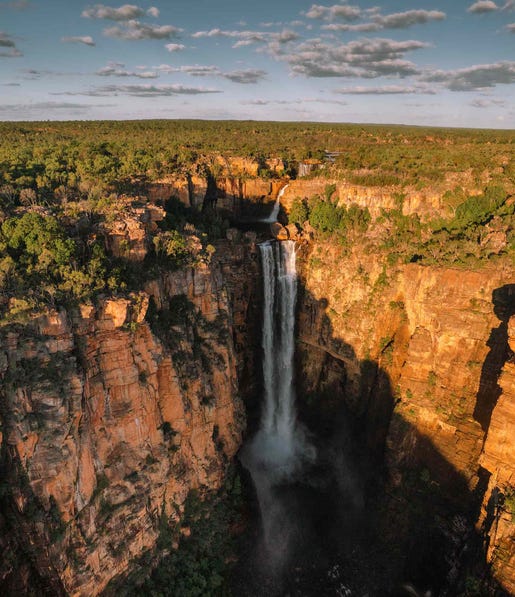
Camping in comfort
While nothing can beat a night under the stars, Kakadu also has a number of camping and glamping options that allow you to experience the best of both worlds in comfort with fully decked out suites, a bar to enjoy your favourite cold beverage and warm water showers.
Cooinda Lodge
Cooinda Lodge sits alongside the beautiful Yellow Water billabong and offers lodge rooms, outback retreat glamping tents along with powered and unpowered sites.
The lodge itself has an inviting swimming pool, restaurant, bar and is an amazing place to base yourself to see Jim Jim and Twin Falls, Yellow Water and the Warradjan Cultural Centre.
Anbinik Kakadu Resort
In the town of Jabiru, nestled amongst a luscious, tropical rainforest garden, you’ll find Anbinik Kakadu Resort. Anbinik has something for every type of traveller from self-contained cabins, powered and unpowered campsites to safari style bush bungalows.
The resort also has a beautiful communal area including a swimming pool and BBQs and is walking distance from the Jabiru town where you’ll find a supermarket, library, post-office, medical centre and other community facilities.
Mary River Roadhouse
Mary River Roadhouse is so much more than just a roadhouse. It has cabins, powered and unpowered sites as well as backpacker’s accommodation.
Mary River Roadhouse makes for the perfect base camp for exploring Maguk, Jarrangbarnmi (Koolpin gorge) or the Yurmikmik walks.
Kakadu Lodge
Kakadu Lodge is the activity hub of Kakadu, as all tours pick up and drop off from the lodge.
After a busy day seeing the sights and touring, come back and unwind by the swimming pool surrounded by lush tropical gardens complemented by a poolside bar, bistro and barbecue facilities.
There’s large camping areas or caravan sites for those bringing their own bed, otherwise you’ll find a range of cabins and lodge rooms.
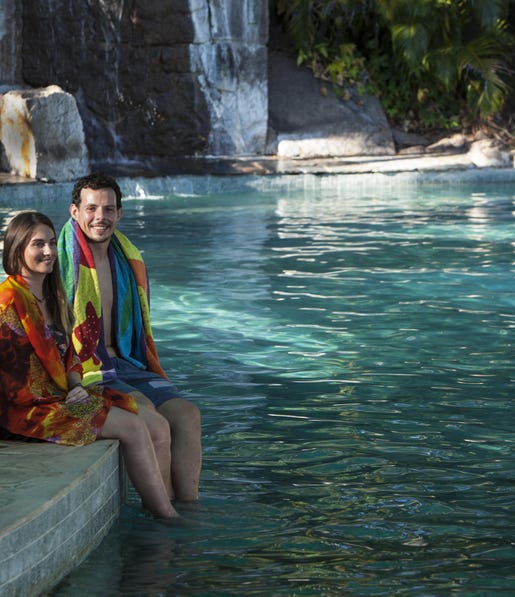
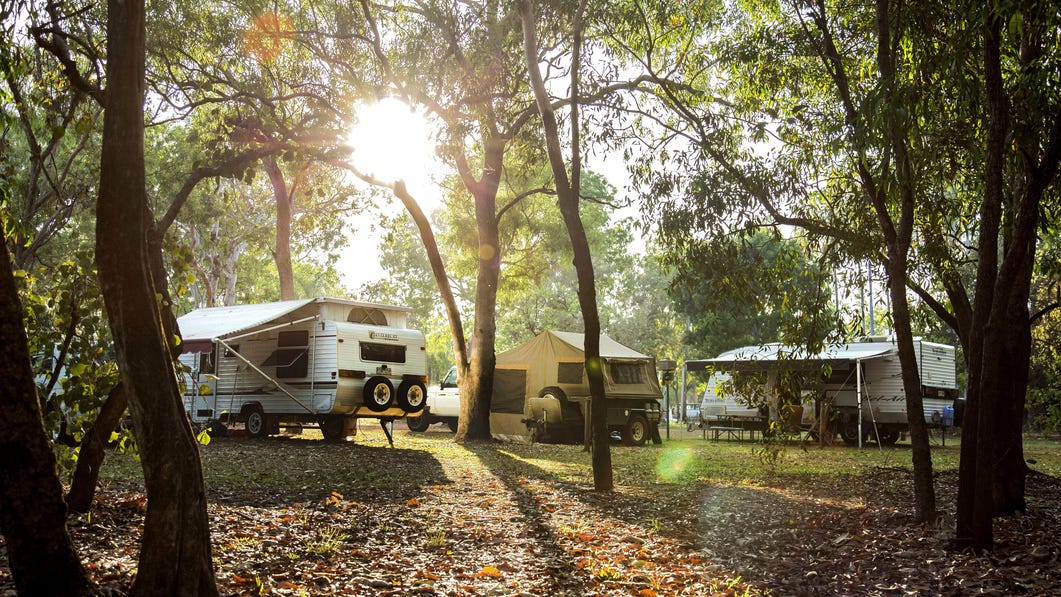
Off the beaten track camping
Escape the crowds and uncover Kakadu’s best kept 4WD secrets. These remote areas have minimal facilities, but the payoff will be some of the most breathtaking and untouched landscapes you’ll ever see.
For some 4WD camp sites in Kakadu, you’ll need a permit. These can be organised online or at the Bowali Visitors Centre.
Four Mile Hole
Four Mile Hole is one of those hidden gems, a secluded billabong filled with barra and popular with the locals. It’s a basic campsite with no facilities so just keep your eyes out for a shady spot to get set up.
Red Lily Billabong
This beautiful billabong is the first of 3 billabongs along a single track. The first is Red Lily Billabong (Djunda), which is great for fishing and named after the red lilies that you’ll find along the water’s edge.
Bucket Billabong
Bucket Billabong is surrounded by foliage which makes for a nice shady spot to set up camp.
It’s only accessible in the Dry, and you’ll need to pass through a creek crossing so make sure you you’re well equipped with a 4WD.
Alligator Billabong
Alligator Billabong is very secluded which makes it popular with fisherman looking for a peaceful day on the water. There are no facilities here, but that’s just the charm of the place. You set up camp under a shady tree and get down to barra business.
Sandy Billabong
Sandy Billabong is quite possibly one of the most beautiful areas on this list, as you’re welcomed by fields of waterlilies strewn across the water. A plethora of wildlife also call this billabong home including the iconic Top End crocodile and vast amounts of birdlife. You’ll wake each morning to the sound of white-bellied sea eagles, whistling ducks, cormorants and long-necked darters.

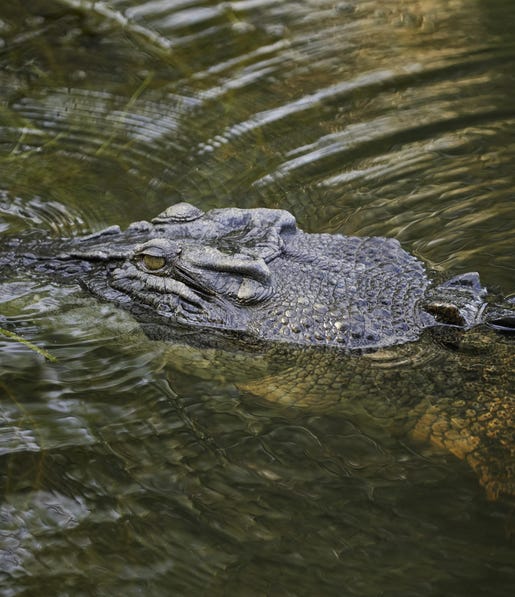
Camping with entertainment
Why not align your camping trip with one of Kakadu’s events that draw crowds from all around the country and the world?
The highlight of the events calendar is Taste of Kakadu – a bush food experience unlike anything else on Earth. Experience the local bush flavours and explore Kakadu’s extraordinary culture. Join foraging walks with bush tucker experts, enjoy canape cruises on lily-lined billabongs, see cooking demonstrations using native ingredients and savour the rustic ground oven feasts.
There are a number of free and ticketed events for everyone to enjoy over the ten-day festival. Make sure you book with one of the local accommodation providers early to avoid disappointment.
One of the biggest free annual events is the Mahbilil Festival which is generally held around the end of August and celebrates Aboriginal culture through music, dance, art and food. Whilst there’s no camping at the event itself, you can find some great spots in nearby Jabiru and surrounds. We recommend Anbinik Kakadu Resort or Kakadu Lodge.
Being voted the number one birdwatching destination in Australia, and with more than a third of Australia’s bird species calling Kakadu home, you can’t miss the annual Kakadu Bird Week. There are a number of free and ticketed tours, talks and workshops that visitors are guaranteed to flock to. It’s worth keeping an eye out closer to the date for the accommodation partner specials to find the best place to stay and camp.
There’s also free daily activities throughout Kakadu National Park including art site talks, walks and activities to teach you about the vast history of this iconic park. Find out more about the art, culture and heritage ini Kakadu.
